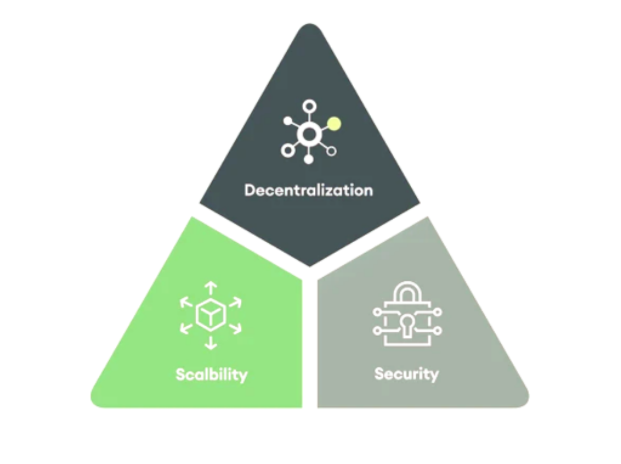When and why blockchain doesn’t work like a “one tool for everything” solution?
Blockchain technology might seem like an irreplaceable tool for companies building their infrastructure from zero. However, for businesses that are migrating to this technology from the already existing infrastructure, it could become quite a challenging process.
First, it takes a long time for people to adapt to this change. Also, to learn everything important about blockchain so, that people could work on their daily tasks effectively. Thus, the company’s tech part would require to devote a lot of time and resources onboarding everyone on how to leverage this technology.
The main challenges
I could distinguish two major drawbacks that companies face when they start to implement blockchain technologies for their internal and/or external tasks.
Scalability
When talking about scalability, I’m referring to the time needed to do a variety of different tasks, like propagating processing and validating different transactions. For the reason that each transaction requires pre-defined time to process and upload new data to the system – the larger the file is, and the more users the system contains – the more time and resources it needs. Currently, it takes around 10 minutes to form a block and add it to the chain. However, such a time frame is set for security reasons.
An example. Let’s say you are a company with a high volume of sales. Then the Bitcoin network would not support a vast volume because it can only do 7 basic transactions and 3 complex transactions per second. This is almost near the peak capacity that the bitcoin network can maintain. Although, there are other blockchains that support more transactions then you would risk data security.
This is where the blockchain Scaling Trilemma comes into play. It is said that blockchain networks could only have two of three crucial traits: decentralization, security, or scalability. Most of the well-known blockchains now are solely focused on decentralization and security rather than scalability.

Blockchain Scaling Trilemma. (Source: Crypto Valley Journal)
Power consumption
Overall, the Bitcoin network uses approximately 110 TWh per year which is almost 0,55% of all electricity consumption worldwide (!), according to Statista’s research published at the end of 2021. The network uses more electricity than all Finland per year combined. So, for the companies that are looking for a sustainable approach – Bitcoin is not ready yet.
What strategies can companies use to adopt blockchain technology?
Naturally, companies want what is best for their businesses. This often leads to the implementation of new technologies. While exploring how companies integrate blockchain into their dataset I have discovered several ways to start with and I would like to share with you too.
- It is always a good idea for such a company to arrange a group of in-house blockchain evangelists. They do not necessarily need to be “real” blockchain evangelists. However, these assigned people would become the first ones to start leveraging the blockchain in a company and launching an internal pilot project to try out how one or another modernized function impacts the whole system.
- You can treat such pilot project(s) as a trial run before the major system migration. This will also reveal the primary insights on how to adapt blockchain technology to specific your company’s needs. Additionally, it would suggest some ideas about how to solve inconveniences that appear on the way. Plus, this is a great way to show the rest of your team how efficient this technology can be in everyone’s daily work.
Usually, at the end of a trial run companies have way more information about this technology and find out how to deal with the occurring challenges. Later on, most of them integrate more parts of their business into the grid.
Although some people are likely to have a hard time adapting to new procedures, business leaders could help everyone adopt the technology by leading with a good example. This also helps in making the transition smooth.
How to encourage teams to tame the blockchain?
People tend to neglect things that they don’t understand. This has happened many times in the past with timely innovations like paper money, bank cards, and even the internet. Quite often there is always resistance to change but eventually, people learn and adopt it.
When people try to approach a new technology or innovation, having some form of guideline to follow is always useful. Visual information is one of the most effective ways for a person to learn. Therefore, I believe that people would find it useful to have video explainers for certain issues and applications of blockchain technology.
Also, in addition to beginner users’ cheat sheets, it is worth accommodating different styles of learning. For newbies in the field, this is crucial. Further, you will find several suggestions where such information can be stored or shared.
- Community sites
So, the first step before integrating blockchain technology into a whole system is to share the knowledge with your team about it, present all pros and cons. When information is conveniently structured, people will be able to learn more from a single source, which makes things much easier. Community sites could be a good knowledge-sharing method. People on these sites are generally very helpful and ready to learn.
- Field professionals
In many cases written information on various sites is valuable but as well people tend to listen more attentively when this information is provided by the people whom they respect. There are great professionals who have dwelled in blockchain technology over the years. They could help others to do the same. These people could also record video presentations explaining to the public the benefits of using blockchain technology and what it brings to the table.
- Real-life examples
Check the companies who have started using blockchain technologies a long time ago. They could lead by example and demonstrate how various operations are carried out if you ask for their consultancy. For example, in Lithuania, there are numerous start-ups that are focused on the development of blockchain technologies and publicly sharing their knowledge with society. One of them is BitDegree. This company is a blockchain-powered, smart-incentive-based online education platform that has a lot of information presented about various blockchain networks and other digital technology courses.
The Conclusion
Although blockchain technology is considered to be a revolutionary solution for many industries, there is also a „dark“ side of this technology. To be more specific it‘s scalability, adoption quirks and the way of how we can (not) involve people into it. Part of the companies that try to adopt blockchain technology face technical scalability issues. Another predictable challenge is how people react to the changes in a company‘s internal technological structure. However, the latter challenge can be often solved by educating people. One of the aforementioned examples was inviting authoritative professionals to share their knowledge and broaden team skills. To sum everything up – even though blockchain is a very convenient tool that helps to ensure transparency, security, or other supply chains’ (and not only) needs it still can‘t be a panacea for all business cases.

